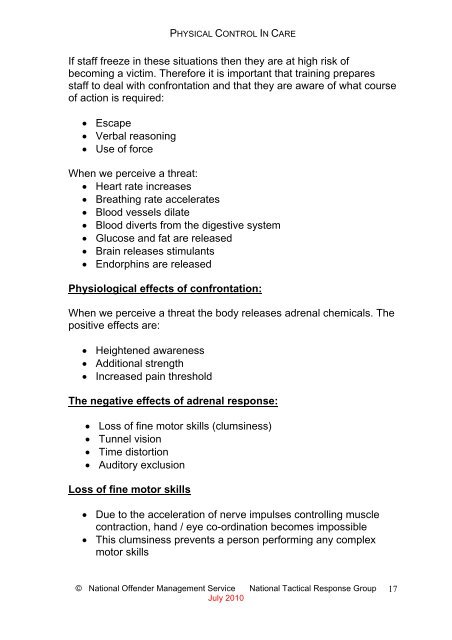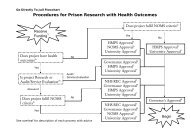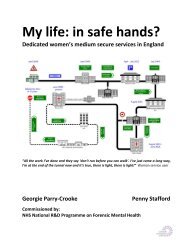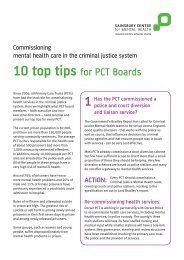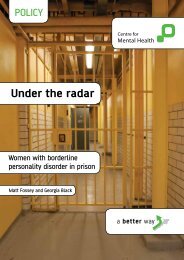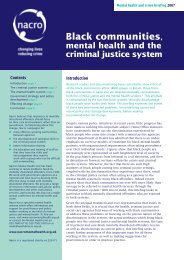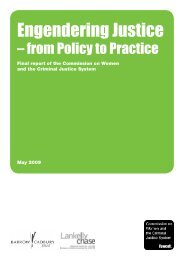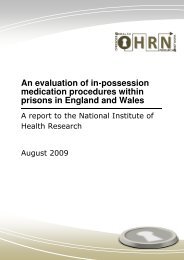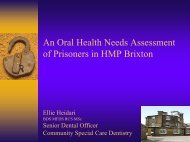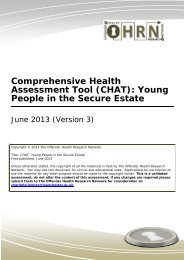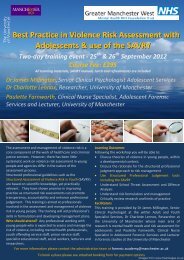Physical Control in Care Training Manual - Independent Advisory ...
Physical Control in Care Training Manual - Independent Advisory ...
Physical Control in Care Training Manual - Independent Advisory ...
Create successful ePaper yourself
Turn your PDF publications into a flip-book with our unique Google optimized e-Paper software.
PHYSICAL CONTROL IN CAREIf staff freeze <strong>in</strong> these situations then they are at high risk ofbecom<strong>in</strong>g a victim. Therefore it is important that tra<strong>in</strong><strong>in</strong>g preparesstaff to deal with confrontation and that they are aware of what courseof action is required:• Escape• Verbal reason<strong>in</strong>g• Use of forceWhen we perceive a threat:• Heart rate <strong>in</strong>creases• Breath<strong>in</strong>g rate accelerates• Blood vessels dilate• Blood diverts from the digestive system• Glucose and fat are released• Bra<strong>in</strong> releases stimulants• Endorph<strong>in</strong>s are releasedPhysiological effects of confrontation:When we perceive a threat the body releases adrenal chemicals. Thepositive effects are:• Heightened awareness• Additional strength• Increased pa<strong>in</strong> thresholdThe negative effects of adrenal response:• Loss of f<strong>in</strong>e motor skills (clums<strong>in</strong>ess)• Tunnel vision• Time distortion• Auditory exclusionLoss of f<strong>in</strong>e motor skills• Due to the acceleration of nerve impulses controll<strong>in</strong>g musclecontraction, hand / eye co-ord<strong>in</strong>ation becomes impossible• This clums<strong>in</strong>ess prevents a person perform<strong>in</strong>g any complexmotor skills© National Offender Management Service National Tactical Response GroupJuly 201017


